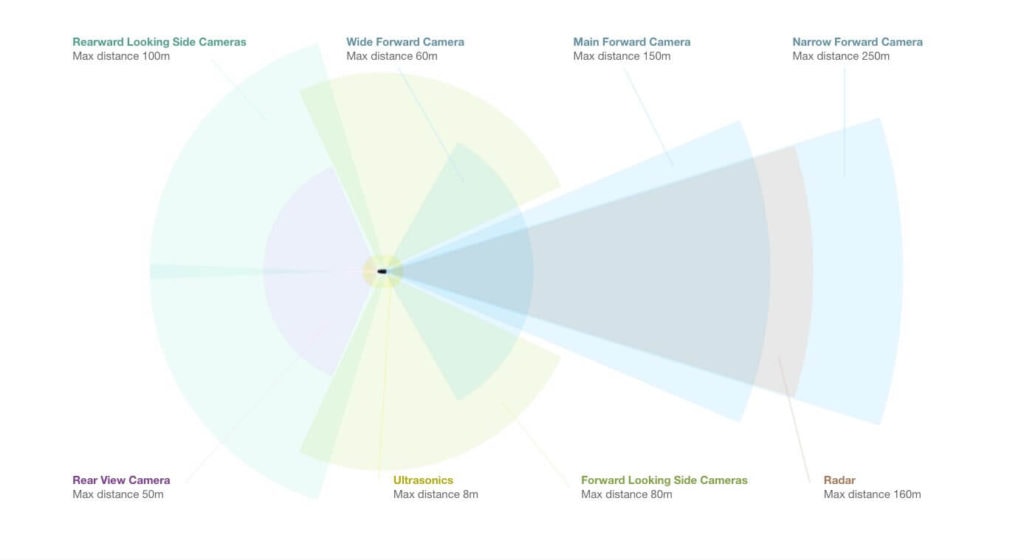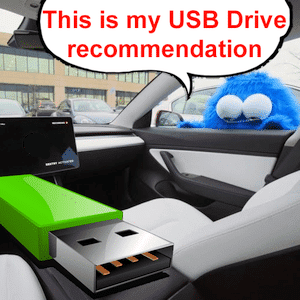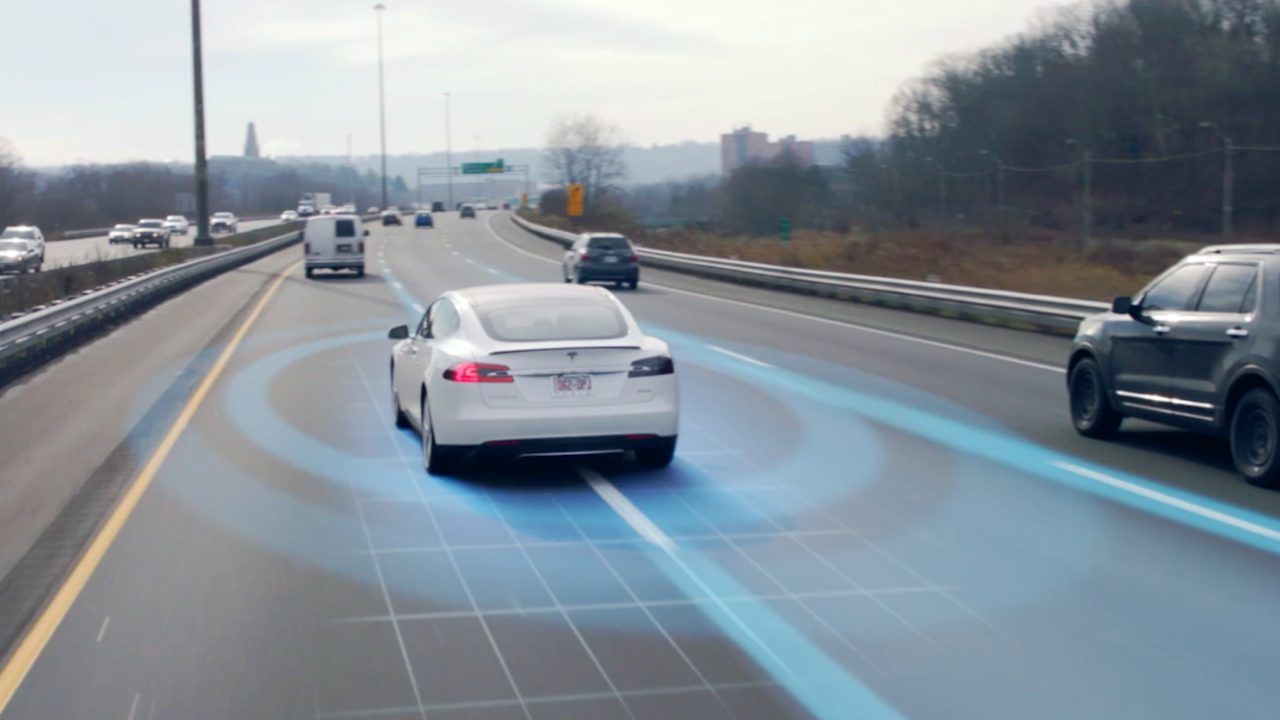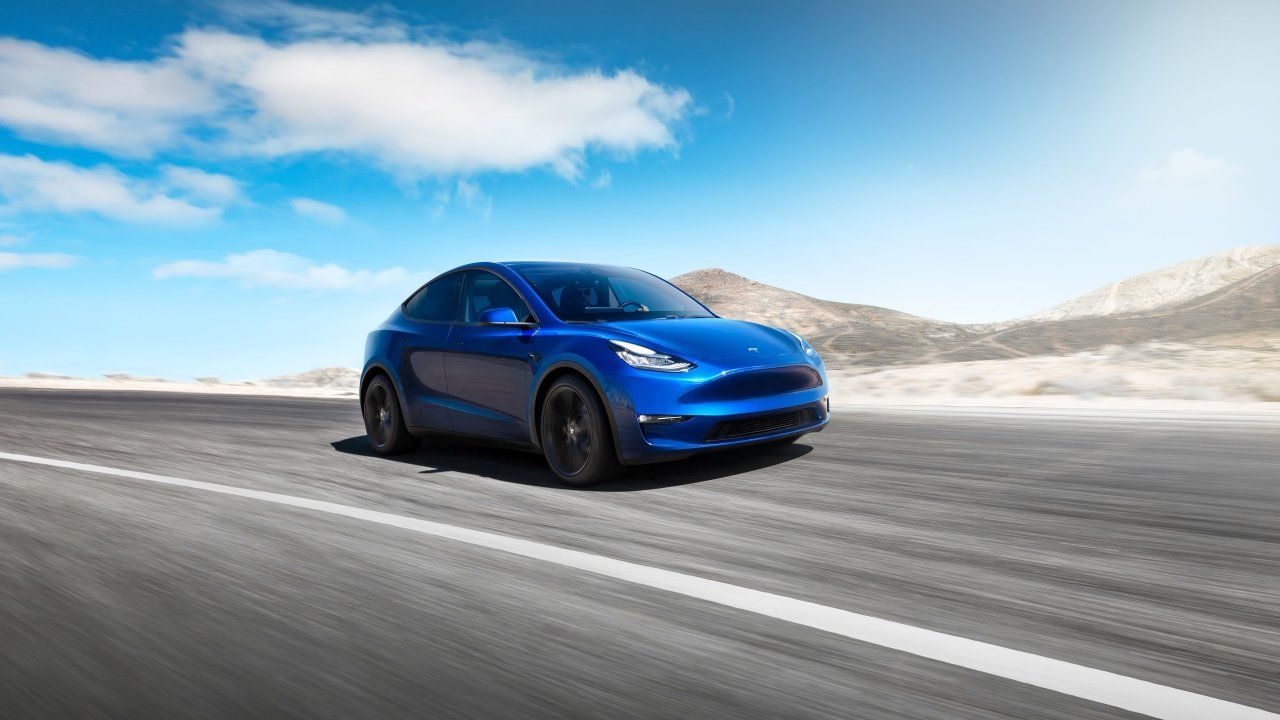The Tesla FSD “Full self-driving” option is a software package that Tesla sells for vehicles with Autopilot 2 hardware or higher. The option is also called FSD for short.
This completely revised article describes the current status of functions and should help to find out whether the purchase of FSD is reasonable or whether the basic autopilot is sufficient for your needs. To purchase “Full Potential for Autonomous Driving”, a Tesla vehicle with at least Autopilot 2 hardware is required. These are all Model S and Model X built from October 2016 and all Model 3 and Model Y. Differences between the different autopilot versions are explained here.
What exactly does autonomous driving mean?
Autonomous driving is divided by the manufacturers into the following development steps. The skills a vehicle must have at these different levels are explained in more detail in this article.
- Level 1 – Driver Assistance
- Level 2 – Partial Automation
- Level 3 – Conditional Automation
- Level 4 – High Automation
- Level 5 – Full Automation
The idea behind Tesla’s FSD software: At some point in the future, the continuous development of the autopilot software will make completely autonomous driving of level 5 possible. This means that at some point a vehicle will drive completely autonomously and will no longer require a human driver. Also, no one to monitor the vehicle while driving. During the development of this system, Tesla will gradually release additional features for this software package that are not enabled under normal autopilot. For example, since summer 2020, automatic stop/start at traffic lights and stop signs has been added.
Shop for more Tesla Accessories here!
How does it work technically?
Some companies have been developing autonomous driving for cars for years. In California, regulatory laws are relatively lax in this regard. Companies have been able to apply for a license for driverless vehicles on the road since 2018, and by May 2020, 66 companies already had such a license. The best-known representative is probably Google’s subsidiary Waymo, which is already delivering remarkable results in autonomous driving, at least in defined areas of some American cities, thanks to high-resolution map material and the use of LiDAR sensors.
Tesla is going a different way here. In addition to radar, most of the competitor’s vehicles are also equipped with so-called LiDAR. LiDAR are sensors that use laser pulses to create a three-dimensional image of the environment that is used by the computer in the vehicle to recognize its surroundings and steer the vehicle accordingly. Elon Musk, however, believes that LiDAR is not necessary and that vehicles can drive autonomously even by using image recognition via cameras, ultrasonic sensors and radar. It remains to be seen whether Tesla will ultimately succeed in achieving autonomous driving at level 5 with this equipment.

The advantage of Tesla’s approach is already clear. With thousands of vehicles on the road, Tesla has a vast amount of data that can be used for computer simulations. This is because all vehicles equipped with cameras, and that includes all Tesla’s sold since October 2016, provide image and sensor data even when the car is not in autopilot mode. Thanks to this huge fleet of “test vehicles”, Tesla can continuously improve its autopilot software and verify innovation in simulations in a real environment in different countries around the world. By comparison, Waymo, for example, is limited to the American roads and fixed districts that have been mapped and where Waymo vehicles are allowed to drive.
Technically speaking, the computers in the vehicles of all manufacturers work with software from so-called neural networks. In simple terms, this involves pattern recognition and machine learning using artificial intelligence (AI). A neural network is “trained” further and further with data from reality and thus improves itself more and more. For example, if Tesla wants to improve autopilot driving in tunnels, it trains its AI with the sensor information from real tunnel drives of 1.2 million customer vehicles (as of October 2020). The improvements are then uploaded back to the fleet via software updates and the behavior of the autopilot is perfected step by step, even if the vehicles are not necessarily in autopilot mode.
An interesting video, which delves technically deep into the subject, is this presentation by Andrej Karpathy, Director of Artificial Intelligence and Autopilot Vision at Tesla.
What is the current feature set of Tesla FSD?
Many people who do not deal with this topic cannot believe it yet, but the development is progressing in huge steps. Regular freeway journeys with automatic lane changes, where the driver only touches the blinker briefly and does nothing else, have been part of everyday life for many Tesla drivers for a long time. The actual accelerator, lane keeping, steering and braking are also things that now work really well. Gradually, more and more additional functions are being added. Of course, the USA is always a few steps ahead of the rest of the world, since the regulatory laws in Europe do not offer the same relaxed conditions and many functions have to be approved first.
But during 2020, new things have been added in Europe as well, with automatic stop/start at traffic lights and stop signs and speed detection on traffic signs. Nevertheless, one should be aware that these functions are also relatively new and do not work perfectly in every situation. Many things at Tesla need their time and a lot of reworking until they work really reliably and well.
In October 2020, the “Full Self Driving Beta” was released in the United States for a small circle of customers. It offers a foretaste of what will hopefully soon be possible in the rest of the World as well. In this unfinished pre-release version, functions such as automatic driving in urban areas including traffic circles and automatic turning are included. Thus, the Tesla Autopilot is no longer a driver assistance system, but should reach “Level 4: high automation” in the first phase, which of course still requires human supervision. In the development of the autopilot, it is definitely a giant step that Tesla is currently taking and the FSD Beta videos from the USA already look very interesting. Allegedly the FSD Beta will be released in November 2020 for the first time outside the USA also in Canada and Norway.
A comparison of the FSD functionality compared to the standard autopilot is shown in the table in this article on the Tesla Autopilot.
Which Tesla vehicles can drive autonomously?
The FSD function can only be purchased for vehicles with at least Autopilot Hardware AP2. Most functions even require the AP3 “FSD Computer”. Older Tesla vehicles with AP2 or AP2.5 computer will have the AP3 “FSD Computer” installed with the purchase of the “Full self-driving”. The availability of this upgrade is shown in this schedule. Which autopilot computer version is installed in a Tesla can be viewed in the vehicle settings:
Click on the vehicle icon on the screen. “Additional vehicle information” is displayed under “Software”. There you will also find a note about the autopilot hardware installed.
Should I buy Tesla FSD now or should I wait?
In the USA FSD takes giant leaps and I’m sure we see the first fully autonomous Tesla soon. But many people believe the FSD functions are not permitted in Europe by far. Step by step it turns out however that quite so in Europe something does itself. Nevertheless, automatic lane change on highways in the USA, for example, works fully automatically and without driver intervention when the vehicle decides to change lanes. In Europe, it is still necessary to tap the blinker briefly to trigger a lane change. This alone shows that a higher degree of automation in Europe still faces legal hurdles.
But an important aspect is the price. The FSD option becomes more and more expensive with increasing functionality. Elon Musk has also communicated this and in the past, despite some short phases when there were discounts, one has seen that the price continues to rise. The history of FSD price increases:
- From October 2016 FSD was offered at a special price of 3000 USD when buying with a new car. Whoever wanted to buy the software later on had to pay 4000 USD. Please note: the software had no additional benefit at that time. In a way, it was an investment in the future.
- From the end of June 2018, Tesla increased the price for FSD orders to 5000 USD.
- In May 2019, the price was increased to 6000 USD.
- From July 2020 Tesla increased the price to 7500 USD and shortly after that even to 8000 USD.
In the US the price even increased to 10’000 USD with the release of the FSD Beta in October 2020. It has been announced that one week after the release of the FSD Beta in each country the costs will also be increased to this price. Since FSD was also available as a “special offer” from time to time, one can of course speculate that it will be even cheaper. Such actions served however in each case to increase the conversions against quarter end and were available most only for a short period. Whether this will happen again in the future is uncertain.
For vehicles with the previously available “Enhanced Autopilot (EAP)” option, the surcharge for FSD is with around 4000 USD somewhat less expensive.
Is FSD, once purchased, transferable to a new vehicle?
No, FSD remains on the vehicle for which it was purchased. It is transferred with a private sale of the vehicle. However, when a car is sold to Tesla, it loses the FSD function. Another aspect to consider when buying FSD is the subscription. Meanwhile, it is clear that FSD will also come as a subscription. Depending on the price and planned duration of use, it can be worthwhile, but the purchase will probably be cheaper eventually.
How can I buy Tesla FSD?
In the configurator, the option “Full self-driving” can be checked when ordering a vehicle. For vehicles that have already been delivered, the option is displayed in the Tesla cell phone app under “Upgrades” as “Autonomous driving”. The option can also be purchased directly in the app using the credit card stored in the Tesla.com user account. After a few hours, the option is then active in the car (indicated by a message on the screen).
Conclusion
For me, as a technology enthusiast, FSD is of course a must. I already bought it at the beginning of 2019, when it was offered at a lower price again. Now in November 2020, my Model S will be upgraded to the “FSD Computer” and I am already excited about the differences. Since I do not plan to sell my car in the next years I think it was the right decision. If I had a leasing vehicle I probably would never have bought FSD either because it is definitely not worth it to replace the car after a few years anyway. But in the end, there is much more behind all this than just improving driver assistance systems. Autonomous Driving Level 5 will change the world one day and it will create completely different possibilities for transporting goods and the way we travel. This summary from Tesla Autonomy Day 2019 shows this very well.
Link to the official autopilot website of Tesla.
My USB Flash Drive recommendations for Sentry Mode and Dashcam:






